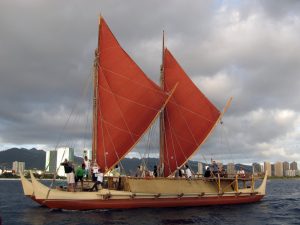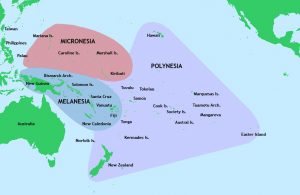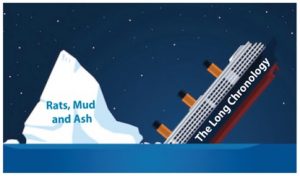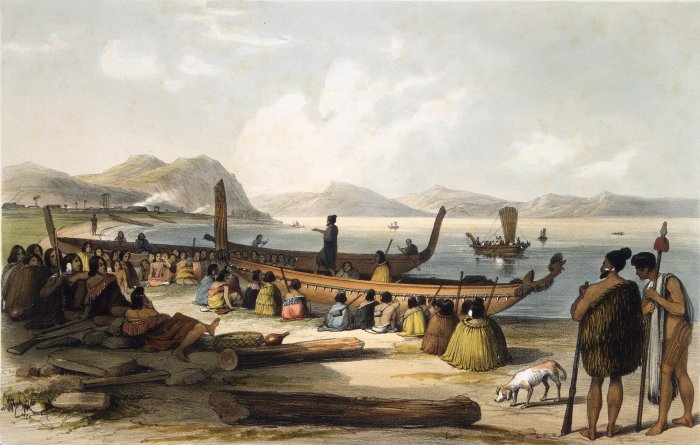Lachie Scarsbrook
“See the line where the sky meets the sea? It calls me. And no one knows how far it goes”.
If you’ve seen Disney’s Moana, like me you probably just sung those first few lines whilst picturing a traditional double-hulled canoe sailing out into the sunny, blue abyss.

Sparked from a desire to explore the final frontier, to boldly go where no one has gone before, or driven from Hawaiki as a result of resource depletion, overpopulation or just plain old exile, ancient Polynesian sea voyages were no such fairy-tale. Imagine watching solid-ground fade away into the horizon knowing there’s a good chance you’ll sail into forever, die at the mercy of the Polynesian sea deity Tangaroa and be lost from the knowledge of men. Not surprisingly this notion was missing from Moana.
Despite these seemingly bleak odds, the superior voyaging capabilities of Polynesians were a huge factor in their successful dispersal. Through wayfinding, a technique of reading the stars and ocean currents like a nautical map, Polynesians boasted maritime skills comparable to the Greyjoys in Game of Thrones, enabling them to achieve one of the greatest migratory feats in human history; the colonisation of the Pacific, including the land of the long white cloud, Aotearoa, New Zealand.
But like all good tales of adventure on the high seas, there is considerable debate surrounding most aspects of the prehistoric colonisation of New Zealand – who were the original settlers, where did they come from and when did they get here?
New kids on the Zealandian continental block: From whence they came?
Millennia ago, the Bismarck Archipelago just north of New Guinea became a mixing bowl of genetic and cultural contributions from both Melanesia and Taiwan, producing a unique culture, known as ‘Lapita’. Famous the world over for their characteristic red-slipped pottery that resembled decorated brick, archaeologists have tracked Lapita expansion throughout Western Polynesia using a Hansel and Gretel inspired technique of following ceramic breadcrumbs.
The Lapita people first arrived on the shores of Tonga around 2,850 years ago, with later colonisation of Fiji and Samoa. This rapid expansion quickly ran out of steam due to the Roaring Forties wreaking havoc on early voyaging waka. Stranded over the course of a millennium, the Lapita people were shaped into true Polynesians, seen through an increased diversity of adzes, fishhooks that would shame any modern angler, and shifts in social hierarchies towards chiefdoms.
The most important technological development during this period was the crab-claw sail, which took their sailing game to the next level. This fruit of Micronesian influence and Polynesian innovation, combined with more favorable sailing conditions corresponding to a marked El Niño reversal, enabled exploration of the Polynesian triangle, and the eventual discovery of New Zealand.

While the overwhelming scientific evidence (i.e. DNA, linguistics and artifacts) points towards an eastern Polynesian origin of Aotearoa’s first inhabitants, this hasn’t stopped the ‘tinfoil hat’ brigade coming up with some highly controversial and left-field early colonisation theories. These include settlement by South American, Egyptian, Phoenician and Celtic explorers, none of which have left a shred of credible scientific evidence for their existence and thus can’t be taken seriously! However, there does exist a more contested topic, not of whom, but when.
The long and short of it: When did Polynesians arrive in New Zealand?
As it stands, there are two competing theories for the colonisation of Aotearoa: the ‘long’ and ‘short’ chronologies. The former suggests that a small, archaeologically-invisible group settled our shores between 0-500 AD, living off the radar for over a millennium. This cryptic record has been suggested to represent the struggle of early settlers to adjust their tropical lifestyle to New Zealand’s considerably cooler climate. Put simply, the population of these early inhabitants grew as successful as their taro, which spoiler alert was pretty measly! In comparison, the short chronology argues for a larger founding population (150-200 individuals) arriving in the late 13th Century AD, which, surprise, surprise, is the same age as some of New Zealand’s oldest archaeological sites and those on other isolated eastern Polynesian outposts.
With the help of modern science, Aotearoa’s contested settlement history is becoming ever clearer. This once evenly-matched pair of theories is now the equivalent of a Democratic popularity contest between Donald Trump and Barack Obama. But where are these ‘new’ clues coming from? The answers lay hidden in sub-fossil kiore (Pacific rat) bones and unsuspecting lake mud.
Dating Polynesian arrival: A tale of fire and mice… well actually rats.

Kiore (Rattus exulans) are spread throughout the Pacific, having been transported during voyages as either accidental stowaways or intentionally as food, ultimately forming the basis of Polynesian Rat-atouille. Upon arriving in Aotearoa, kiore numbers exploded, like pouring water onto Mogowai, due to the smorgasbord of avian, reptilian and invertebrate delicacies, complimented by a side of seeds, berries and leaves. In their wake, these ravenous hordes left a tale of native decimation and foreign domination in the subfossil record.
Prehistoric remains of kiore can be found throughout New Zealand in extinct laughing owl roosts and middens (i.e. rubbish dumps) around Māori settlements, and increasingly as trace fossils, including gnaw marks on plant seeds and snail shells, as well as coprolites (i.e. desiccated faeces). While radiocarbon dating of these rat snacks have consistently yielded ages around the magic date of 1280 AD, the bones themselves tell a more conflicting story, with some highly controversial ages dating back to nearly 2,000 years.
Extraordinary claims require extraordinary evidence, and these early dates supporting the long chronology have never been replicated. Subsequent analyses, using vastly better techniques failed to produce dates any older than the late 13th Century AD providing the ‘nail in the coffin’ for the long chronology, suggesting contamination was to blame. Despite ecological destruction by rats offering definitive proof for the short chronology, it was the people themselves that provided the literal smoking gun.
Fire was one of the most effective tools in the Polynesian toolbox, with a variety of uses from hunting giant flightless birds, to making overland travel easier and replacing dense, dark, native forest with tasty bracken fern. Resulting run-away wildfires fundamentally changed Aotearoa. Tall forests that had seen millennia pass by were destroyed in the blink of an eye, only to be replaced by open shrubland and grassland. Smoke would have blackened the sky, and ash rained down across the landscape. Isolated alpine lake mud captured snapshots of these apocalyptic events, recording elevated charcoal and shifts in plant communities. And here’s the kicker, this initial burning period occurs no earlier than ~1280 AD during a period of relatively stable climate!
The proof is in the pyroclasts

Some people still remain sceptics about the short chronology, trusting radiocarbon dating as much as Russia’s non-involvement in the recent US election. However, other independent palaeoecological proxies including tephrochronology (i.e. the dating of volcanic eruptions) only strengthen the argument.
Following the Kaharoa eruption of Mount Tarawera in 1314 AD, wind-blown ash blanketed northern New Zealand resulting in a continuous, stratigraphic timestamp. The rat-gnawed seeds, charcoal spikes and consequent biological turnover events occur no deeper than immediately below the Kaharoa tephra.
In the face of overwhelming evidence against the long chronology, I think it’s safe to say the ship has well and truly sailed, far beyond the line where sky the meets the sea, and lost to the tides of time. Rather than continuing this academic debate, scientists should focus their combined efforts on understanding how Polynesian colonisation has shaped Aotearoa, for better or worse, in terms of our enriched cultural landscape contrasted with our dramatic biodiversity declines.
Lachie Scarsbrook is a Masters student in the Otago Palaeogenetics Lab testing for the impacts of humans and climate change on Aotearoa New Zealand’s geckos. This blog was one of the winning entries in the ZOOL419 From Extinction to De-Extinction popular science writing competition.


Loved the article; scholarly but with some humour, “Fire and mice”‘- much appreciated.
Thanks Lachie – this is informative & beautifully written.
Good article but I’d like to see the author explain the Okehu Tribrach from a Polynesian perspective as just one of 18 artifacts that are unexplained in a Polynesian perspective. – https://bit.ly/2KZNhM9